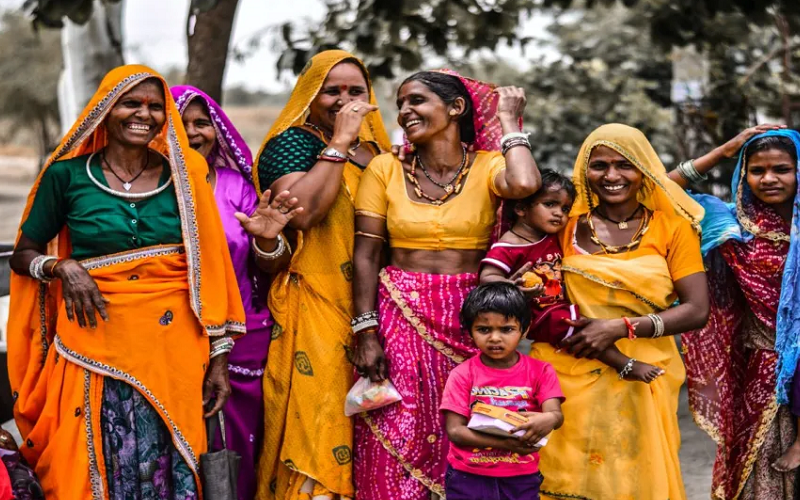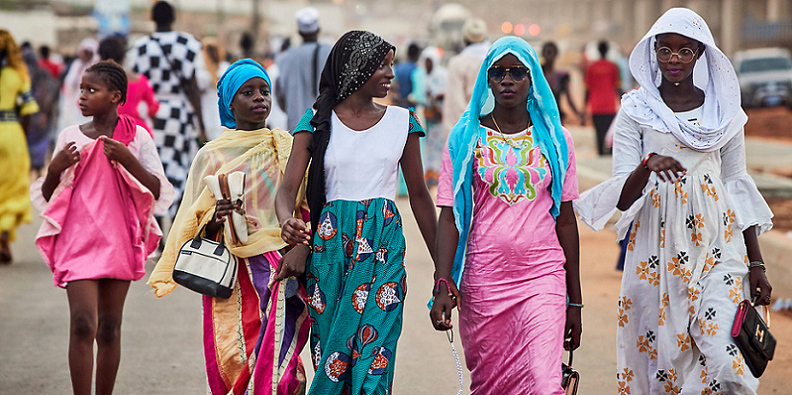
In this vibrant exploration, we delve into the rich tapestry of global fashion, uncovering how different cultures express their unique identities, values, and histories through their attire. From the intricate kimonos of Japan, symbolizing grace and tradition, to the bold and colorful patterns of West African Ankara fabrics, each garment tells a story. Here we travel across continents, exploring how regional climates, historical events, and social norms shape the way people dress.
Contents
Historical Perspective of Fashion
Fashion is not just a contemporary phenomenon; it has deep historical roots that have significantly shaped its evolution over the centuries.
Ancient Civilizations
The journey of fashion begins in ancient civilizations, where clothing was more about function than style. Ancient Egyptians, for instance, favored light linen garments due to the hot climate. In contrast, the Romans and Greeks draped themselves in togas and tunics, emphasizing ease of movement and simplicity.
The Middle Ages
Moving into the Middle Ages, fashion became a symbol of status and wealth. The nobility wore elaborate and expensive fabrics like silk and velvet, often adorned with fur and jewels. This era also saw the rise of tailored garments, fitting the body more closely, which was a significant departure from the loose tunics of ancient times.
The Renaissance Period
The Renaissance period brought a renewed interest in art and beauty, which was reflected in clothing. This era saw the introduction of vibrant colors and richer fabrics. Fashion became more extravagant, with men and women wearing elaborate gowns and doublets, often complemented by intricate accessories.
The Industrial Revolution
The Industrial Revolution marked a significant turning point in fashion history. The invention of the sewing machine and mass production of textiles made clothing more affordable and accessible to the general public. This period also saw the rise of the department store, changing how people shopped for clothes.
20th Century Fashion
The 20th century was a time of rapid change in fashion, influenced by social, political, and technological changes. The two World Wars had a profound impact, with practicality and simplicity becoming key due to material shortages. Post-war, fashion became a way to express newfound freedoms, leading to various styles like the flapper dresses of the 1920s and the bold prints of the 1960s [1].
The Modern Era
Today, fashion is an eclectic mix of past trends and new innovations. Technology has revolutionized the industry with advancements like sustainable fabrics and digital fashion shows. The internet and social media have also democratized fashion, allowing anyone to share their style with a global audience.

Cultural Significance of Dress in Various Regions
Clothing is more than just a functional necessity; it is a vivid expression of a region’s culture, history, and identity. Each region’s traditional attire tells a unique story, deeply rooted in its past and continuously evolving with its present.
Asia: A Tapestry of Traditions
Asian fashion is incredibly diverse, reflecting the continent’s rich array of cultures and histories. In Japan, the kimono stands out as a symbol of elegance and tradition, each design and color carrying specific meanings. China’s cheongsam or qipao, with its high collar and silk fabric, speaks to the blend of traditional aesthetics and modern influences. Indian attire is renowned for its vibrant colors and intricate embroidery, with the sari representing a blend of regional styles and traditions [2].
Africa: Vibrancy and Symbolism
African fashion is distinguished by its use of vibrant colors, bold patterns, and meaningful symbols. West African Ankara fabric, for instance, is celebrated for its colorful and intricate designs, often used to make dashikis and other traditional garments. In North Africa, the djellaba and kaftan are prevalent, reflecting the region’s Islamic influence and the need for clothing suited to a desert climate.
Europe: Elegance and Innovation
European fashion has long been at the forefront of global style, influenced by the continent’s history of monarchies, revolutions, and cultural movements. From the tailored suits of England to the haute couture of France, European fashion blends traditional elegance with contemporary trends. Traditional attire like the Scottish kilt or the Russian sarafan also continues to be important cultural symbols.
The Americas: A Blend of Indigenous and Contemporary Styles
The fashion of the Americas is a fusion of indigenous and contemporary influences. In North America, Native American regalia, with its intricate beadwork and symbolic patterns, continues to be a crucial part of cultural expression. In Latin America, clothing like the Mexican sombrero and the Andean poncho reflects the region’s indigenous heritage and Spanish colonial influence.
Oceania: Island Styles and Colonial Influences
Oceania’s fashion is deeply influenced by the region’s island cultures and colonial history. Traditional garments like the Hawaiian aloha shirt and the Samoan lavalava showcase the region’s penchant for bright, nature-inspired patterns. These styles reflect not only the tropical climate but also a history of cultural exchange and adaptation [3].
Fashion Icons and Designers from Diverse Backgrounds
Fashion is a global language, and its narrative is enriched by the diverse voices of fashion icons and designers from various backgrounds.
Trailblazers in Western Fashion
Western fashion has seen a plethora of iconic designers who have revolutionized the industry. Coco Chanel, for instance, redefined women’s fashion in the early 20th century with her timeless designs and emphasis on comfort. Another influential figure is Giorgio Armani, known for his clean, tailored lines that introduced a new formality in menswear. These designers set the stage for modern fashion, breaking free from the constraints of their times and setting new trends.
Pioneers from Asia
Asia has given rise to influential fashion designers who have made significant contributions to the global fashion scene. Japanese designer Rei Kawakubo, founder of Comme des Garçons, is renowned for her avant-garde approach, challenging conventional notions of beauty and fashion. Indian designer Sabyasachi Mukherjee has gained international acclaim for his fusion of traditional Indian aesthetics with modern design, redefining luxury bridal wear.
African Fashion Visionaries
African fashion has been gaining global recognition, thanks in part to designers who have brought their cultural heritage to the forefront of their designs. Nigerian designer Folake Folarin-Coker, with her brand Tiffany Amber, has been celebrated for her ability to blend African aesthetics with contemporary elegance. South African designer Laduma Ngxokolo has received accolades for his modern knitwear designs that incorporate traditional Xhosa beadwork patterns [4].
Latin American Influencers
Latin America’s fashion scene has been vibrant and dynamic, with designers making their mark on the international stage. Brazilian designer Carlos Miele is known for his use of bright colors and fluid designs that reflect the spirit of Brazil. Meanwhile, Mexican designer Carla Fernández has been praised for her work in preserving and revitalizing traditional Mexican textile techniques.
Innovators from Oceania
Designers from Oceania have also contributed significantly to the fashion world, blending their unique cultural backgrounds with contemporary fashion. New Zealand designer Karen Walker is known for her quirky, yet sophisticated style, often incorporating playful elements into her designs. Australian designer Akira Isogawa is celebrated for his fusion of Eastern and Western aesthetics, creating a unique and artistic fashion language.
The Role of Globalization in Fashion
Globalization has been a double-edged sword in the fashion industry, bringing about both positive transformations and significant challenges. It has facilitated the cross-pollination of styles and ideas, while also raising concerns about sustainability and cultural appropriation.
Expansion of Fashion Markets
Globalization has enabled fashion brands to expand their markets beyond their national borders. This expansion has not only benefited major fashion capitals like New York, Paris, and Milan, but it has also brought attention to emerging fashion hubs in Asia, Africa, and Latin America. As a result, we see a more diverse array of fashion influences and styles on the global stage.
Fusion of Cultural Styles
One of the most exciting aspects of globalization in fashion is the fusion of different cultural styles. Designers are increasingly drawing inspiration from a variety of global traditions and aesthetics, leading to innovative and eclectic designs. This fusion has given rise to new styles that reflect a blend of influences, illustrating the dynamic nature of contemporary fashion [5].
Challenges of Fast Fashion
However, globalization has also given rise to fast fashion, a model characterized by rapid production to keep up with the latest trends. While this has made fashion more accessible, it has also led to environmental and ethical concerns, including the exploitation of labor and the impact of mass production on the environment. The fashion industry is grappling with these issues, seeking ways to become more sustainable and responsible.
Digital Revolution and Fashion
The advent of the digital age, a direct result of globalization, has transformed the fashion industry. Online retail, social media, and digital marketing have changed how fashion is consumed and marketed. It has allowed for a democratization of fashion, where independent designers and small brands can reach a global audience without the need for a physical presence in fashion capitals.
The Future of Fashion in a Globalized World
Looking forward, the role of globalization in fashion is likely to evolve further. There is a growing movement towards sustainable and ethical fashion practices, reflecting a more conscientious approach to production and consumption. Additionally, as digital technology continues to advance, we may see further innovations, such as virtual fashion shows and augmented reality in retail.
References
[1] How Fashion Meets Culture
[2] Cultural Impact on Identity and How it is Expressed through Dress
[3] Cultural expression through dress
[4] Inspiration Versus Exploitation: Traditional Cultural Expressions at the Hem of the Fashion Industry
[5] Dress to Express: Exploring Culture and Identity

